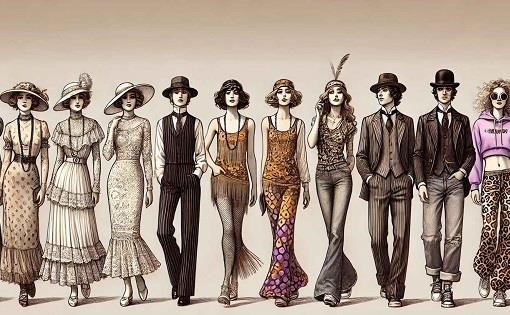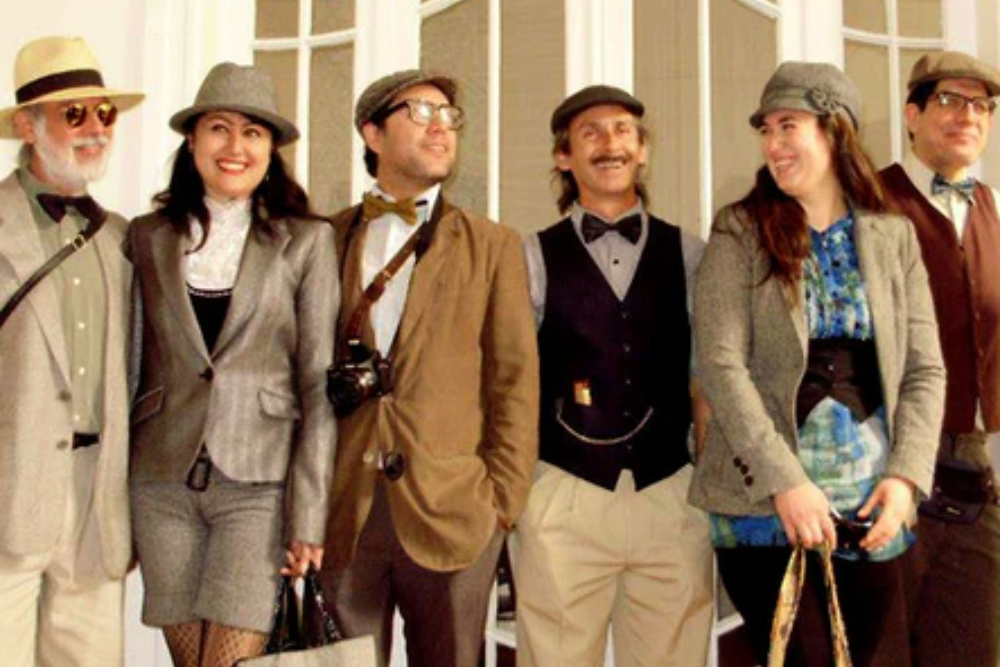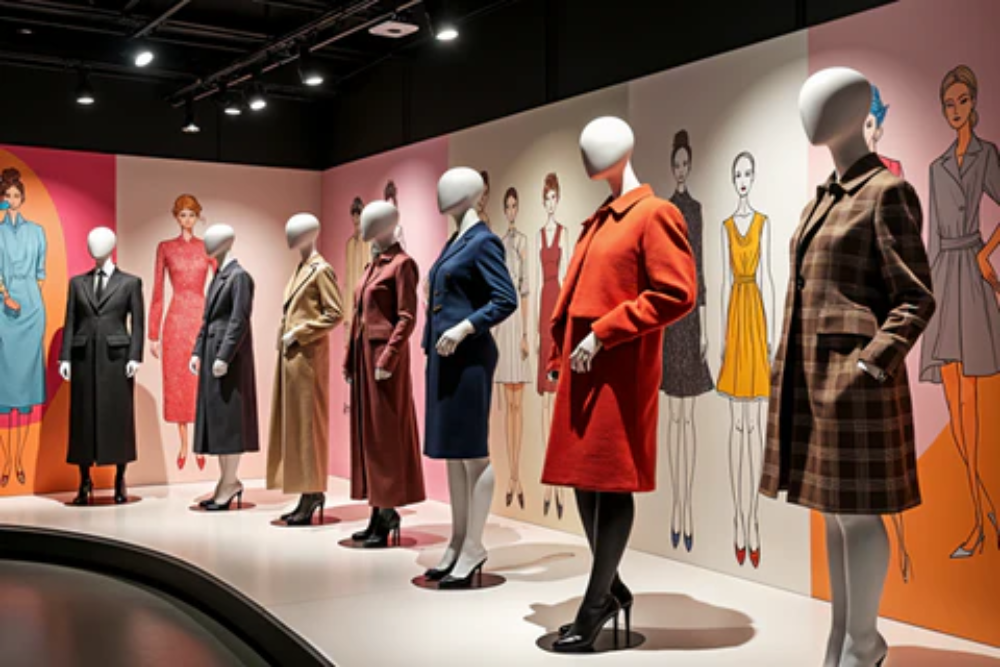Introduction
Fashion is a dynamic reflection of cultural, social, and technological changes throughout history. From the linen garments of Ancient Egypt to the diverse styles of the 21st century, fashion has continuously evolved, influenced by various factors such as climate, social status, and technological advancements. This essay explores the history of fashion from Ancient Egypt to the modern day, highlighting key developments and trends that have shaped the way we dress.
Ancient Egypt (c. 3150 BCE – 30 BCE)
In Ancient Egypt, clothing was primarily made from linen, a fabric well-suited to the hot desert climate. Men typically wore simple kilts, while women donned sheath dresses known as kalasiris, which were held up by straps and reached the ankle. These garments were often adorned with beads and feathers, indicating social status The New Kingdom period (c. 1570–1069 BCE) saw the emergence of more elaborate fashions. Upper-class women wore long, figure-fitting dresses, sometimes supplemented by sheer tunics. Elaborate wigs adorned with beads and jewels became fashionable, and the capelet, a sheer linen garment, became a popular accessory .
Ancient Greece and Rome (c. 800 BCE – 476 CE)
In Ancient Greece, clothing was characterized by simplicity and elegance. Both men and women wore garments made from rectangular pieces of cloth draped and pinned in various ways. The chiton, a tunic-like garment, was worn by both sexes, while women also wore the peplos, a heavier, woolen garment.
Roman fashion evolved from Greek influences but included more elaborate styles. Men wore the tunic, while women wore the stola, a long dress that signified marital status. The toga, a large, draped cloth, was worn by Roman citizens during formal occasions. Colors and materials indicated social status, with purple being reserved for the elite.
The Middle Ages (5th – 15th Century)
During the Middle Ages, fashion became more structured and was influenced by feudal society. Clothing was made from wool, linen, and fur, with the wealthy wearing garments made from silk and adorned with embroidery. Men wore tunics and hose, while women wore long dresses with fitted bodices and flowing skirts.
Sumptuary laws were enacted to regulate clothing based on social class. These laws dictated the types of fabrics and colors individuals could wear, reinforcing social hierarchies. Hats and head coverings became important indicators of status and profession.fashionculture.life
The Renaissance (14th – 17th Century)
The Renaissance period saw a revival of interest in classical antiquity, influencing fashion. Clothing became more elaborate, with rich fabrics like velvet, silk, and brocade being used. Men wore doublets and hose, while women wore gowns with low necklines and wide skirts supported by farthingales.
The use of accessories, such as gloves, hats, and jewelry, became more pronounced. Portraits from this era often depicted individuals in opulent attire, highlighting their wealth and status.
The 18th Century
The 18th century was marked by extravagant fashion, especially among the French aristocracy. Women wore elaborate gowns with wide panniers, and men wore coats with elaborate embroidery and lace. Wigs became a prominent fashion accessory, with styles becoming increasingly elaborate.
Fashion during this period was influenced by the Rococo style, characterized by ornate details and light colors. However, towards the end of the century, the French Revolution led to simpler styles as a rejection of aristocratic excess.
The 19th Century
The 19th century saw significant changes in fashion, influenced by industrialization and social change. Women’s fashion was characterized by the hourglass silhouette, achieved through the use of corsets and crinolines. Men’s fashion became more standardized, with the three-piece suit becoming popular.
The Victorian era emphasized modesty and propriety, with clothing reflecting these values. However, the latter part of the century saw the emergence of more relaxed styles, influenced by the Arts and Crafts movement and the early stages of the women’s suffrage movement.
The 20th Century
The 20th century was a period of rapid change in fashion, influenced by technological advancements, cultural shifts, and global events.
- 1900s–1910s: Fashion was characterized by Edwardian styles, with women wearing long, flowing gowns and men wearing suits with high collars.
- 1920s: The “Roaring Twenties” saw the rise of the flapper dress, characterized by short hemlines and loose silhouettes. Men’s fashion became more relaxed, with the introduction of the tuxedo.
- 1930s–1940s: The Great Depression and World War II led to more practical and modest clothing. Women wore dresses with longer hemlines, and men’s suits became more structured.
- 1950s: Post-war prosperity led to the return of glamorous fashion, with Christian Dior’s “New Look” emphasizing a feminine silhouette.
- 1960s: The counterculture movement influenced fashion, with the introduction of











